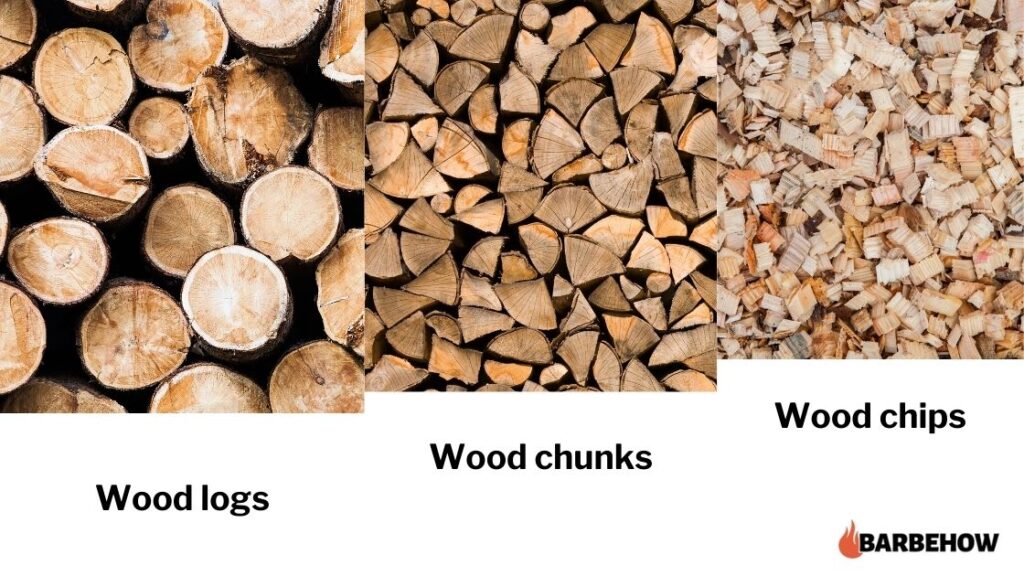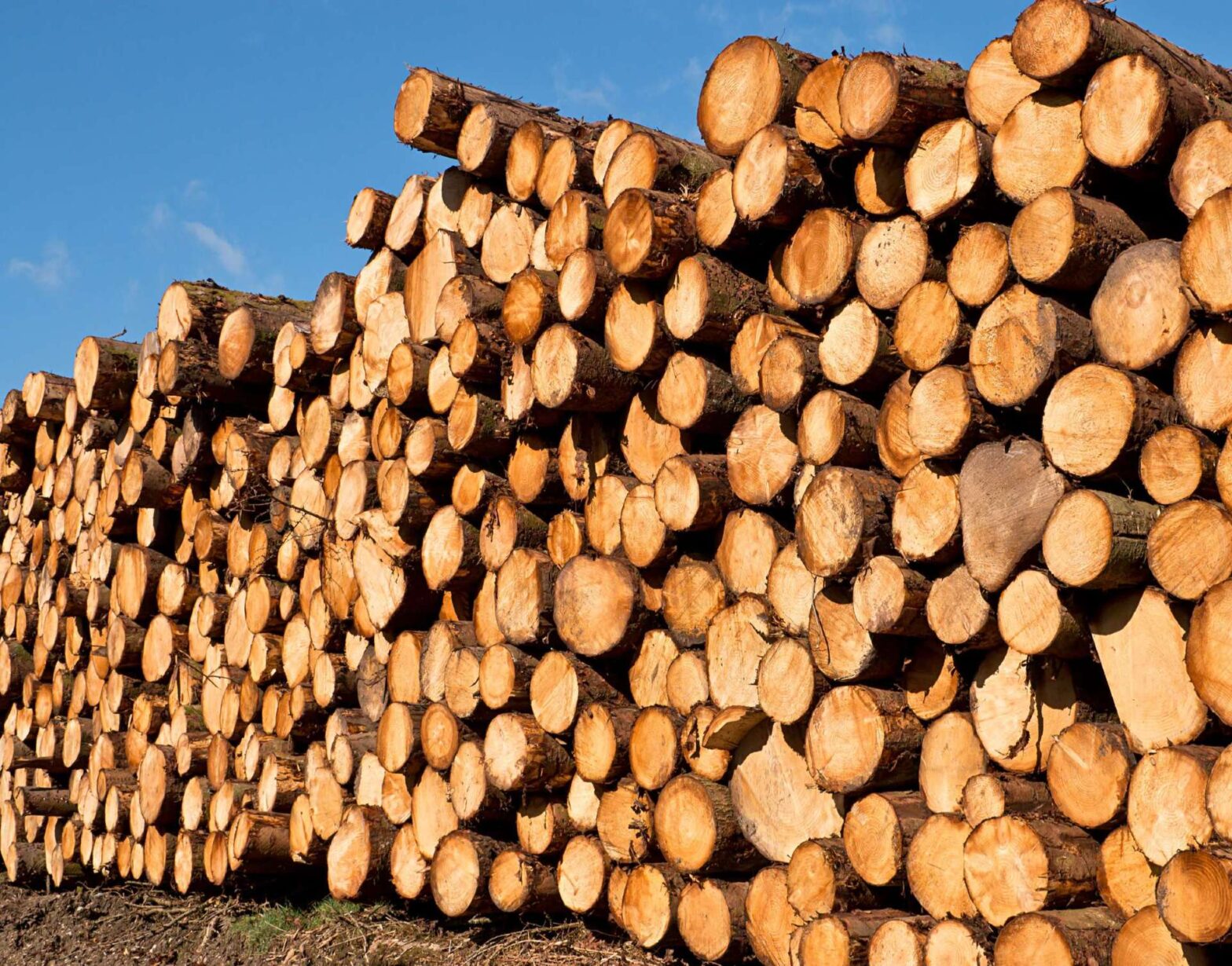One of the most common questions we are asked about smoking meat is, “Can I use freshly cut wood to smoke meat?” The answer to this question is a resounding “no.”
Green wood gives off heavy smoke, which makes your smoked meat taste bitter or acrid. When eaten, meat cooked over green wood overpowers the taste buds and numbs the tongue.
Freshly-cut firewood is not suitable for smoking meat. Because it contains too much moisture, it does not burn well; it smolders with a heavy, dirty smoke. Instead, use seasoned or kiln-dried firewood.
Smoke from green firewood can not only cause your meat to taste bitter but can also lead to the formation of creosote—a dangerous byproduct of wood combustion—in your smoker’s chimney.
Creosote happens only when charcoal or wood is burnt inefficiently. Touched, and it causes rashes on the skin. Inhaled, and it irritates the lungs. Eaten, and, according to the U.S. Centers for Disease Control and Prevention, it can cause stomach pain, as well as kidney or liver problems.
In contrast, seasoned and kiln-dried firewood produces a thin, clean, see-through smoke: this smoke leaves the firebox gracefully, travels through the smoker to flavor the meat, and exits through the chimney without leaving creosote build-ups behind.
Seasoned Firewood
The best wood for smoking meat is seasoned firewood, or wood that has been cut and left to dry out over a period of 12 to 18 months, sometimes even for a few years.
This may be wood that you cut yourself, or it might as well be wood that you bought from a supplier.
If you buy your wood from a supplier, always ask how long it has been dried for. Regardless of the answer, it is advisable to check the moisture content with a moisture meter, as not all dealers would be honest about the moisture content of their wood.
Opinions differ on the question of the minimum amount of time required for drying firewood. Some say 3 months is enough for certain timber; others argue that wood dried for less than 9 months cannot be called “seasoned.”
What is certain is that the wood must be dried out until its moisture content drops to 20% or less. Exactly how long that is comes down to the type of wood, the climate, the season, and the storage conditions.
Oak wood, for example, takes up to 2-3 years to dry. That’s a long time to wait for a smoked brisket, even if you consider yourself patient! Ash and maple, on the other hand, only need a few months under the right conditions.
Kiln-Dried Firewood
The second best wood for smoking meat is kiln-dried firewood, or wood that has been cut and seasoned quickly in a kiln. Generally, three types of kilns are used:
Conventional kilns use steam to heat the atmosphere inside them. The water content of the wood is converted into vapor by evaporation and gets discharged from with the hot air.
Dehumidifying kilns, equipped with auxiliary heating and circulating fans and capable of controlling both temperature and humidity, dry wood in a temperature range of 80°F to 240°F within a few days.
Solar kilns, which you can buy commercially or build yourself, use the sun’s energy to heat the air, which is then circulated by an electric fan, slowly drying the wood inside. A do-it-yourself solar kiln can dry 450 board feet of inch-thick firewood in less than six weeks (provided it’s summer and the weather is good).
Seasoned or Kiln-Dried?
Seasoned firewood is naturally dried over a long period of time. On the other hand, kiln-dried firewood is artificially dried in a matter of days to weeks, depending on the process.
For the same reasons, kiln-dried firewood has a moisture content of 10-15% outside and 20-25% inside, while seasoned firewood has a more uniform moisture content of 20%, so it burns lower and slower when seasoned right.
However, finding a trustworthy wood dealer—someone who will consistently sell you well-seasoned firewood and who won’t cheat you on the quantity—can be a real challenge in some states.
Not surprisingly, most wood burners and meat smokers prefer to buy kiln-dried wood or get freshly-cut wood and season it themselves.
Smoking Meat: With Softwood or Hardwood?
Only use hardwoods for smoking, grilling, and barbecuing meat. Softwoods give off a toxic smoke that imparts a bitter, menthol taste to the meat and can even make you and everyone else at the table sick.
Softwoods, for those of you who are new to wood burning, are cone-bearing trees such as cedars, cypresses, firs, junipers, larches, pines, and spruces.
When it comes to the “best” hardwoods for smoking meat, most pitmasters tend to burn alder, apple, cherry, fig, hickory, maple, mesquite, oak, peach, and pecan (in alphabetical order).
Perhaps one of the best pieces of advice I have received about cooking with wood that I would like to pass on to you is to choose your wood as you would choose your rubs; it imparts more aroma and flavor than you probably think.
Conventional wisdom teaches you that milder firewoods such as fruit trees impart a soft, sweetly flavor to poultry and fish. Heavier firewoods, such as mesquite, oak, and hickory, have a stronger smoky flavor better suited for beef, lamb, and pork.
Of course, what wood you throw into the firebox of your smoker depends on what country you live in and what trees grow over there. In Australia, for example, they smoke meat over black wattle, ironbark, manuka, and red gum.
Logs, Chunks, or Chips?

Firewood comes in the form of logs, chunks, and chips. The size to use depends on the make and model of your smoker, the amount of space in your firebox, and the recipe at hand’s cooking time.
The golden rule, though exceptions apply, is that logs are best for larger offset smokers; wood chunks for smaller offset smokers and cabinet smokers; and wood chips for vertical smokers and gas grills equipped with a big and sturdy enough smoke box.
In Summary
Avoid smoking meat with green wood; it has too much moisture and gives off a heavy, dirty smoke that gives the meat a bitter taste. It also burns at a lower temperature and causes creosote to build up in your smoker’s chimney.
Whether it’s split logs, wood chunks, or wood chips, hardwood that’s been properly seasoned or kiln-dried to a moisture content of under 20% is the best choice.
When in doubt, buy your firewood fresh cut and dry it yourself. I know it takes a year, but it’s worth the wait.

